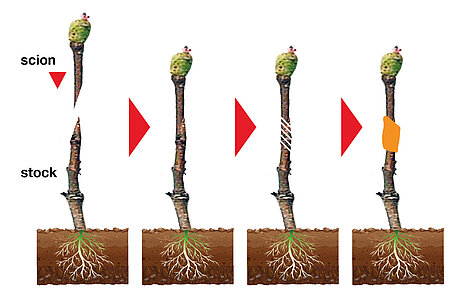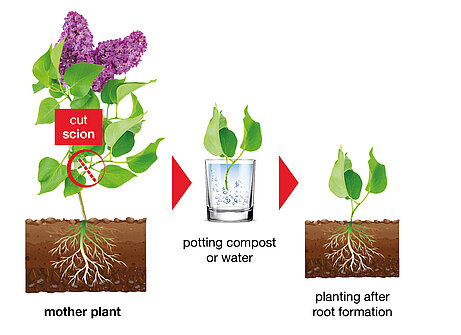Plant propagation
Plant clones are suitable for investigating the influence of temperature on phenology without the individual genetics masking this effect - i.e. amplifying or attenuating it. Individuals of the same species can differ substantially in their external appearance (and thus also in their phenology). Therefore, for the gardens of the IPG network, plants are vegetatively propagated so that all individuals can be traced back to a single plant and have the same internal growth rhythm as the mother tree.
Mother garden
Currently, the young plants that are sent to the IPGs (normal- and expanded programme) come from a mother garden in Grafrath near Munich, Germany (AELF, Bavarian Office for Food, Agriculture and Forestry Fürstenfeldbruck). The mother garden for the plants of the GPM programme is located in Abstatt, Germany (GartenBaumschule Krauß).
Methods
Common methods of vegetative propagation are to produce cuttings and grafting. The advantage of grafting is that it is usually easy to implement for many tree species. However, there might be the possibility that the rootstock (derived from the same species but with different genetics, which is used for the scion to grow on) gets dominant. Propagation by cuttings, on the other hand, guarantees that all parts of the plant, from the root to the crown, have the same genetic origin. However, this method is far more time-consuming and is linked to a lower success rate.



